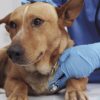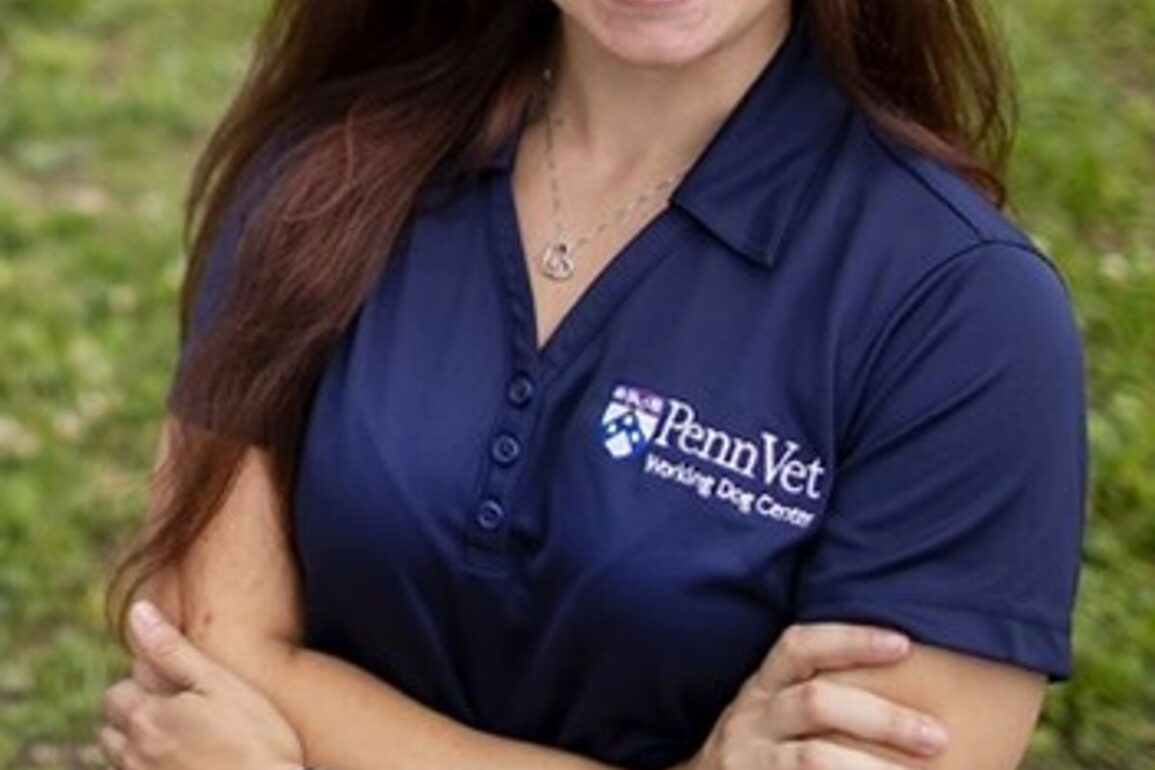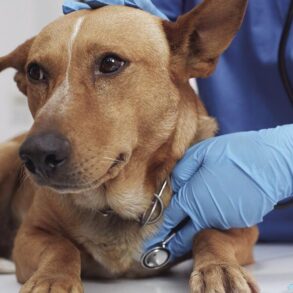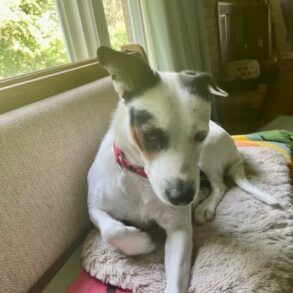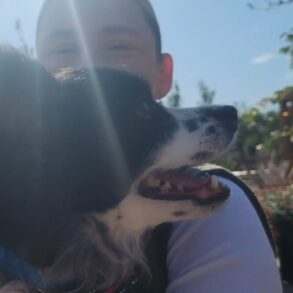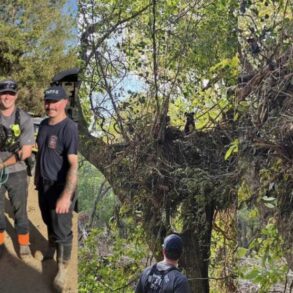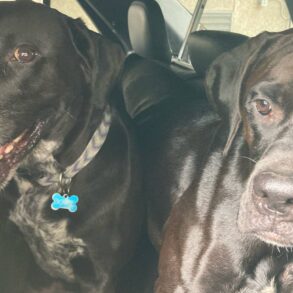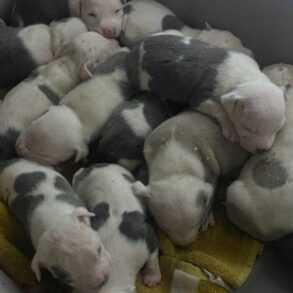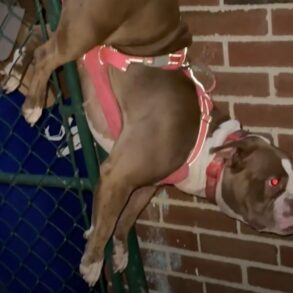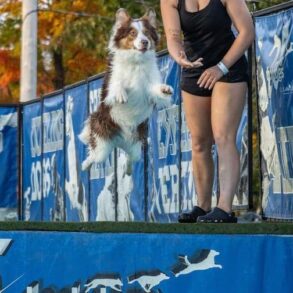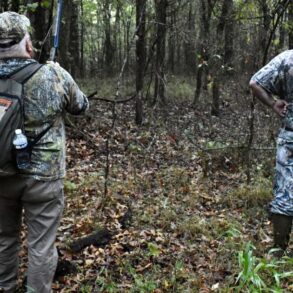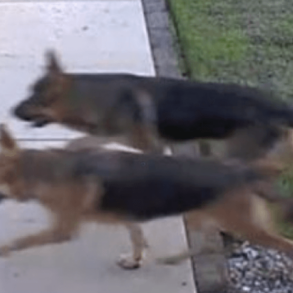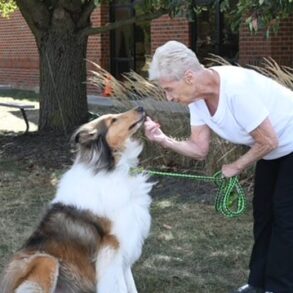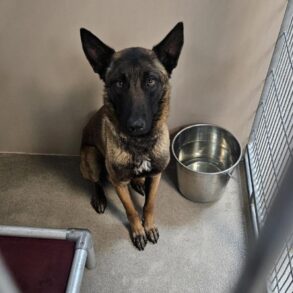Anyone who has taken their beloved dog on a walk knows how an athletic excursion can quickly turn into a contemplative stroll between every tree trunk and fire hydrant in the neighborhood. A dog’s intense need to check their pee-mail is driven by their powerful sense of smell. Researchers have found ways to harness this superpower to detect volatile organic compounds (VOCs), the byproducts of metabolism produced by organisms, from the mightiest beasts to the smallest microbes.1 This ability makes dogs ideal collaborators for medical odor detection research.

Meghan Ramos is the medical director of the Penn Vet Working Dog Center and a lecturer of working dog sciences and sports medicine at the University of Pennsylvania’s School of Veterinary Medicine.
Meghan Ramos
In a recent study published in Frontiers in Allergy, scientists employed a special group of furry recruits whose job it was to snuffle out stubborn Staphylococcus aureus infections.2 “The study was born out of the poor diagnostic ability to detect bacterial biofilms, particularly with joint infections,” said Meghan Ramos, medical director of the Penn Vet Working Dog Center at the University of Pennsylvania’s School of Veterinary Medicine, and coauthor of this study. The research team put their canine colleagues to work by training them to detect the distinctive VOC biomarker signature of S. aureus biofilms in vitro, with the hope of finding a new way to detect infections that accumulate on orthopedic implants after surgery.
Eight dogs of various breeds collaborated on the study, four of which were recruited from the Penn Vet Working Dog Center and four from their community science program, which includes dogs that practice canine nose work through odor detection sports. The dogs were hired for their personality traits and task-focusing ability rather than breed-specific characteristics.
The qualifications for working dogs included high drive, high energy, and a constant need for mental stimulation. The qualifications for a medical odor detection dog are even more rigorous, requiring critical thinking, a razor-sharp task focus, and mental resilience. If the VOC signature were a stew, the dogs are expected to identify and differentiate each individual ingredient. “We want them critically evaluating the odor profile we’re asking them to look for. They need to be motivated to work to potentially get a treat or toy without becoming discouraged,” Ramos said.
In this study, the dogs were first taught to identify S. aureus VOCs from cotton balls rich in odors absorbed from cell culture biofilms and alert the researchers using a trained response such as sitting or lying down. “We use that cotton ball to show the dogs and say, this is what you are smelling, this is the odor we want you to have. It starts just simply: you smell this, you get a cookie, you smell this, you get a toy. That’s the simple process where they understand this is now what they’re looking for,” Ramos described. The researchers presented the dogs with the blend of odors and taught them which specific one was correct.




Gus, a medical detection dog, training on the odor wheel at the Penn Vet Working Dog Center at Pennsylvania University.
Penn Vet Working Dog Center
Once trained on these VOC odor signatures, the dogs’ super sniffers were tested on tear duct fluid from rabbits with and without joint infections. The researchers first taught the dogs what healthy tear duct fluid smells like, then introduced them to samples from infected rabbits. The dogs excelled at pinpointing the unique bacterial odor signature in the rabbit biological samples with a high degree of sensitivity and specificity, even at early stages of infection. The researchers already tested this approach on tear duct fluid from a small number of humans with confirmed join infection. The preliminary results were promising, but more testing is needed.
“We really are in an exciting place. Dogs are changing how we perceive diseases. We’re also changing people’s perception of what a biomarker is to include these volatile organic compounds,” said Cynthia Otto, director of the Penn Vet Working Dog Center, who coauthored this study. “When we started this, nobody was thinking about volatile organic compounds, but now we’ve expanded the opportunities to make a diagnosis and develop technology to help save lives, whether they’re human lives or animal lives.”




Cynthia Otto, director of the Penn Vet Working Dog Center and professor of working dog sciences and sports medicine at the University of Pennsylvania’s School of Veterinary Medicine, and her foster dog, Vauk, who works at the Penn Vet Working Dog Center in medical detection.
Shelby Wise, Wise K9 Photography
The broader goal of this work is to harness dogs’ exquisite noses to inform the development of a bedside or laboratory test to screen and diagnose bacterial biofilms, providing a future path for non-invasive testing, early detection, and targeted treatment. “Dogs are educating our material, our robots, our industry, so that we can scan massive amounts of disease, not just bacterial biofilms. We’re using the dogs as a tool to advance our knowledge and understanding,” Ramos said.
Drupad Trivedi, a biomedical researcher and lecturer in analytical and measurement science at the University of Manchester, who was not involved in this study, believes that the work addresses key bottlenecks in canine medical odor detection training and translation. “Generalisation of training is often a struggle when the sample is complex, like in this case. By training dogs on biofilms in vitro and then testing on samples from rabbits and humans, the authors have shown that odor VOCs in the case of S. aureus infection are not masked or altered by the matrix,” Trivedi said.
For now, the chemicals that make up the S. aureus VOC signature are still a mystery. “The exact odor profile right now only exists in our dogs’ noses and brains. I wish they could tell me what they are,” Ramos said.
This post was originally published on this site be sure to check out more of their content.

